The Everest Base Camp Trek offers an incredible 14-day journey that brings together stunning landscapes and rich Sherpa culture. Beginning in Lukla, trekkers navigate through iconic spots like Namche Bazaar and Gorak Shep, ultimately reaching the awe-inspiring Kala Patthar for breathtaking views. Yet, amidst the beauty, the challenges of high altitude and rugged paths require thoughtful preparation. Those considering this trek might wonder about the essential gear and strategies for acclimatization. What are the must-haves for a successful adventure?
Key Points

- The Everest Base Camp Trek lasts 14 days, starting from Lukla, and includes iconic locations like Namche Bazaar and Kala Patthar.
- Trekkers experience high-altitude challenges, requiring acclimatization and fitness preparation for successful completion.
- Cultural immersion is rich, with opportunities to engage with Sherpa communities and visit ancient monasteries.
- Essential inclusions are trekking permits, airport transfers, comfortable tea house accommodations, and experienced guides.
- The best times to trek are pre-monsoon (March-May) and post-monsoon (September-November) for optimal weather and scenic views.
Trek Overview and Experience
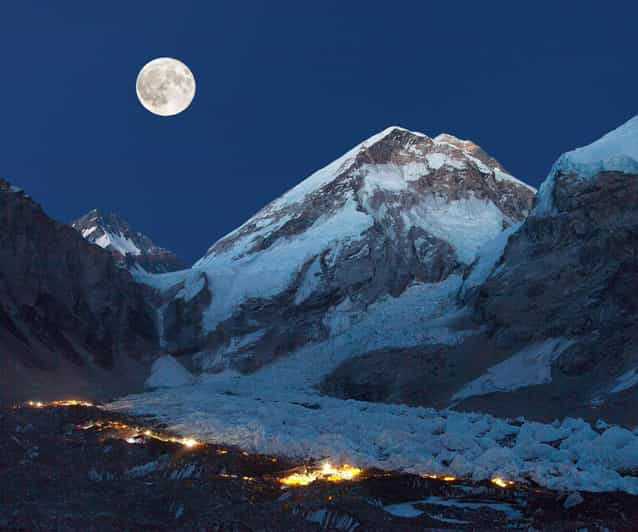
The Everest Base Camp Trek spans 14 exciting days, starting from Lukla and offering trekkers breathtaking views of iconic peaks like Mount Everest, Lhotse, and Ama Dablam along the way.
The journey takes adventurers through the vibrant Sherpa town of Namche Bazaar, where they can rest and refuel. They’ll explore the serene Tengboche Monastery and acclimatize in Dingboche, preparing for the high-altitude trek ahead.
The trek continues to Lobuche and Gorak Shep, culminating at the legendary Everest Base Camp. A pre-dawn hike to Kala Patthar rewards trekkers with stunning panoramic views of the mountains.
The return journey offers familiar landscapes, ensuring an unforgettable experience filled with scenic beauty, snow-capped peaks, glaciers, and diverse wildlife.
You can also read our reviews of more hiking tours in Namche Bazar
Cultural Immersion and Challenges
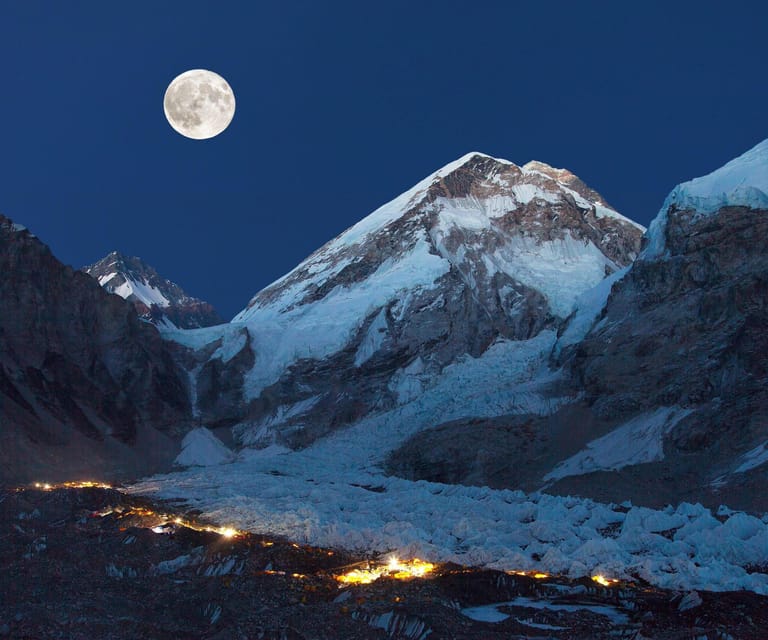
Engaging with Sherpa communities along the trek offers trekkers a unique glimpse into the rich culture and traditions of the region. Visitors often find themselves welcomed into local homes, experiencing traditional meals and warm hospitality. Ancient monasteries dot the landscape, inviting exploration and reflection on spiritual practices.
However, the trek isn’t just about cultural discovery; it also poses significant challenges. High altitude can lead to discomfort, while variable weather and rugged terrain test trekkers’ resilience. Each hurdle overcome fosters a sense of personal achievement and unforgettable memories.
Balancing culture with the physical demands of the trek enhances the overall experience, making it a profound journey that combines adventure with personal growth.
Inclusions and Services
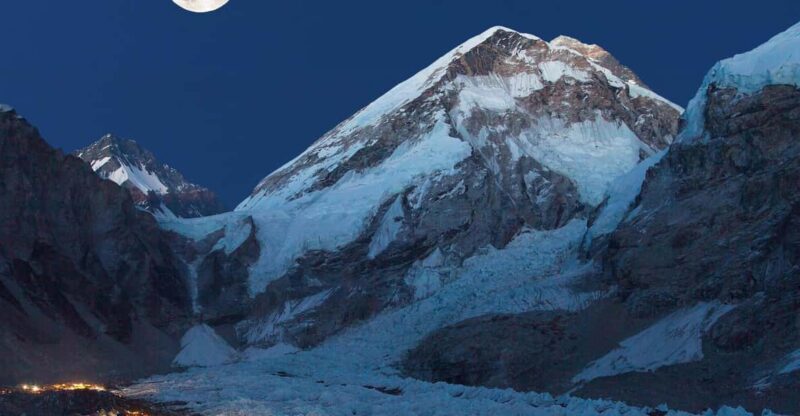
Trekking to Everest Base Camp comes with a variety of inclusions and services designed to ensure a smooth and enjoyable experience for adventurers.
Participants receive essential trekking permits, including Sagarmatha National Park and TIMS, along with airport transfers between Kathmandu and Lukla.
Comfortable accommodation in tea houses or lodges is provided, and three meals daily during the trek keep energy levels up.
An experienced trekking guide leads the way, while porter services handle gear transportation.
A basic medical kit is available for emergencies, and participants should have insurance coverage for evacuation needs.
Lastly, a pre-trek briefing helps everyone prepare, and all necessary government taxes and fees are included in the package.
Exclusions and Additional Costs
Many travelers may be surprised to discover that certain costs aren’t included in the Everest Base Camp trek package. For starters, international flights to and from Kathmandu aren’t covered, so travelers need to budget accordingly. Plus, personal travel insurance is essential for medical emergencies or trip cancellations. Visa fees for entering Nepal also add to the total cost.
Travelers should keep in mind personal expenses like souvenirs, snacks, and beverages, as these aren’t part of the package. Meals in Kathmandu and any optional activities come at an extra cost too. Alcoholic beverages fall outside the package, and tips for guides and porters are generally expected but not included.
Lastly, if you need extra gear, rental fees apply.
More Great Tours NearbyImportant Information and Preparation
Preparing for the Everest Base Camp trek requires careful planning and consideration of various factors to ensure a safe and enjoyable experience.
Trekking enthusiasts should assess their fitness levels and prepare accordingly, as the journey demands physical stamina.
It’s vital to pack comfortable clothing and essential gear, while also remembering that alcohol and drugs are prohibited.
Before booking, travelers should consider group sizes, itineraries, and equipment rental options.
Familiarity with local culture and etiquette can enhance the experience, as can understanding weather patterns and seasonal variations.
Lastly, it’s crucial to review cancellation policies and payment methods to avoid surprises.
With thorough preparation, trekkers can embark on this unforgettable adventure with confidence.
Acclimatization Strategies

Acclimatization is crucial for trekkers aiming to conquer Everest Base Camp, as it helps the body adjust to the high altitude and reduces the risk of altitude sickness.
To ensure a safe trek, trekkers should ascend gradually, typically not exceeding 300 meters in elevation each day after reaching 3,000 meters. Incorporating rest days, especially in places like Dingboche, allows the body to adapt effectively.
Staying hydrated and maintaining a balanced diet also plays a vital role in acclimatization. Trekkers should listen to their bodies, recognizing symptoms of altitude sickness and descending if necessary.
Ultimately, these strategies promote a more enjoyable experience and increase the likelihood of successfully reaching Everest Base Camp.
Packing Essentials for the Trek
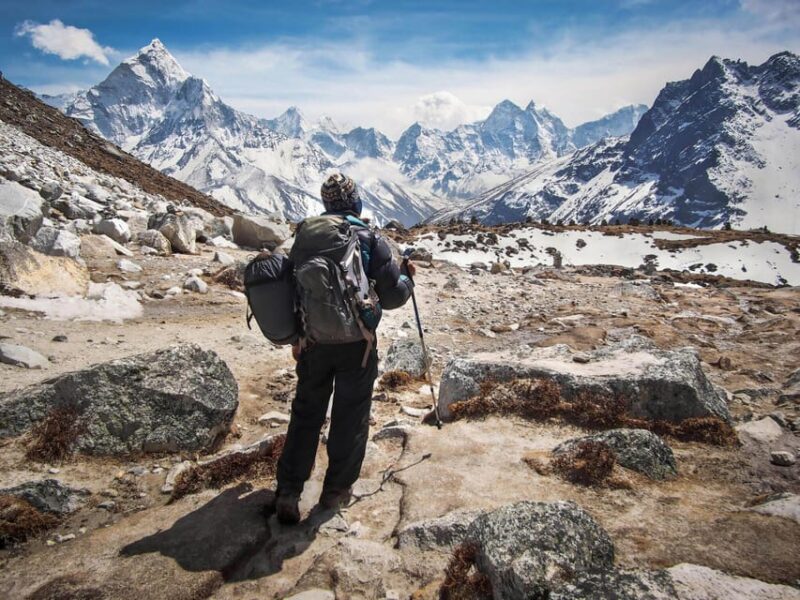
Packing the right essentials for the Everest Base Camp trek is crucial for ensuring comfort, safety, and an enjoyable adventure in the challenging high-altitude environment.
First and foremost, trekkers should invest in a sturdy pair of hiking boots and moisture-wicking clothing to keep warm and dry. A reliable down jacket, a waterproof shell, and thermal layers are key for varying temperatures.
Don’t forget a good sleeping bag rated for cold weather and trekking poles for stability. Essential accessories include a wide-brimmed hat, sunglasses, and gloves.
A first aid kit, water purification tablets, and high-energy snacks can make a significant difference. Lastly, a quality backpack should comfortably carry all gear, ensuring trekkers are prepared for their unforgettable journey.
Best Time to Trek Everest
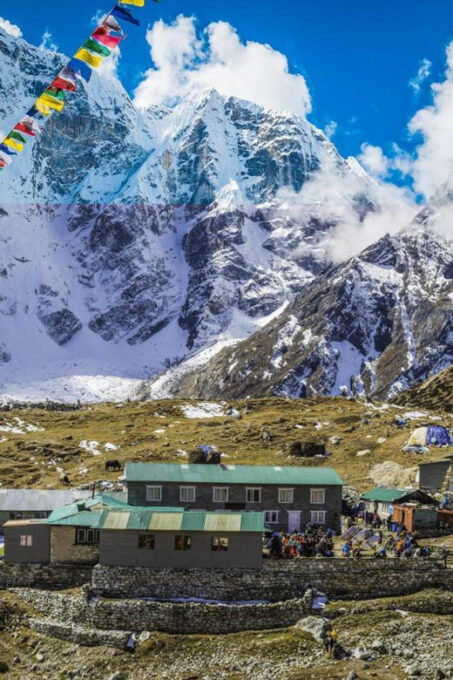
The best times to trek to Everest Base Camp are during the pre-monsoon season in spring (March to May) and the post-monsoon season in autumn (September to November), when the weather is generally stable and the views are breathtaking.
Trekking during these periods allows trekkers to enjoy not only the stunning landscapes but also the best chances for clear skies.
Here are three key factors to consider:
-
Weather Conditions: Expect warmer temperatures in spring, while autumn offers crisp, clear days.
-
Crowds: Spring is busier, attracting more trekkers, while autumn provides a quieter experience.
-
Scenic Beauty: Spring showcases blooming rhododendrons, whereas autumn features vibrant fall colors against the majestic peaks.
Frequently Asked Questions
What Type of Footwear Is Recommended for the Trek?
For any trek, sturdy, waterproof hiking boots with good ankle support are essential. They ensure comfort on rugged terrain, prevent injuries, and keep feet dry. Proper socks also help in preventing blisters and enhancing overall comfort.
Are There Charging Facilities for Electronic Devices Along the Route?
There’re charging facilities available along the route, but they might be limited and sometimes require a fee. Travelers should carry portable chargers to ensure their devices stay powered throughout the journey.
Is It Safe to Trek Alone Without a Guide?
Trekking alone without a guide can be risky. It exposes individuals to unexpected challenges like navigation issues and altitude sickness. Many prefer guides for safety, local knowledge, and support, ensuring a more enjoyable experience overall.
How Can I Stay Connected With Family During the Trek?
To stay connected with family during the trek, he can use local SIM cards or Wi-Fi in lodges. Regular updates via messages or social media will keep everyone informed and ease their worries about his adventure.
What Happens if I Experience Altitude Sickness?
If altitude sickness occurs, the guide’ll assess the situation. They might recommend descending to a lower altitude, resting, and staying hydrated. Quick action’s crucial, as it helps prevent severe complications and ensures a safer experience.
Recap
To sum it up, the Everest Base Camp Trek isn’t just about reaching a destination; it’s an unforgettable journey filled with stunning landscapes, rich culture, and personal growth.
With proper preparation and acclimatization strategies, trekkers can fully embrace the challenges and rewards this adventure offers.
Whether you’re drawn by the majestic peaks or the vibrant Sherpa communities, this trek promises an experience that stays with you long after you return home.
So, lace up those boots and get ready for the adventure of a lifetime!
You can check availability for your dates here:More Hiking & Trekking Tours in Namche Bazar
More Tour Reviews in Namche Bazar
Not for you? Here's more nearby things to do in Namche Bazar we have reviewed
- Everest Base Camp Trek – 12 Days Guided Trek
- Lobuche Peak Climbing 2025/2026
- Everest Panorama Trek-10 Days
- Lobuche Peak Climbing with EBC TREK-18 Days
- Everest Base Camp, Cho-La Pass, and Gokyo Trek
- Guided: Everest Base Camp Trek
- Pokhara: 11-Day Everest Base Camp Trek
- Everest Base Camp Trek
- Everest: 6-Day Panorama Trek
- 12 days Everest Base Camp Trek
- 5-Day Everest Tour with Breakfast at Everest View Hotel
- 8 DAYS EVEREST PANORAMA VIEW TREK FROM KATHMANDU
